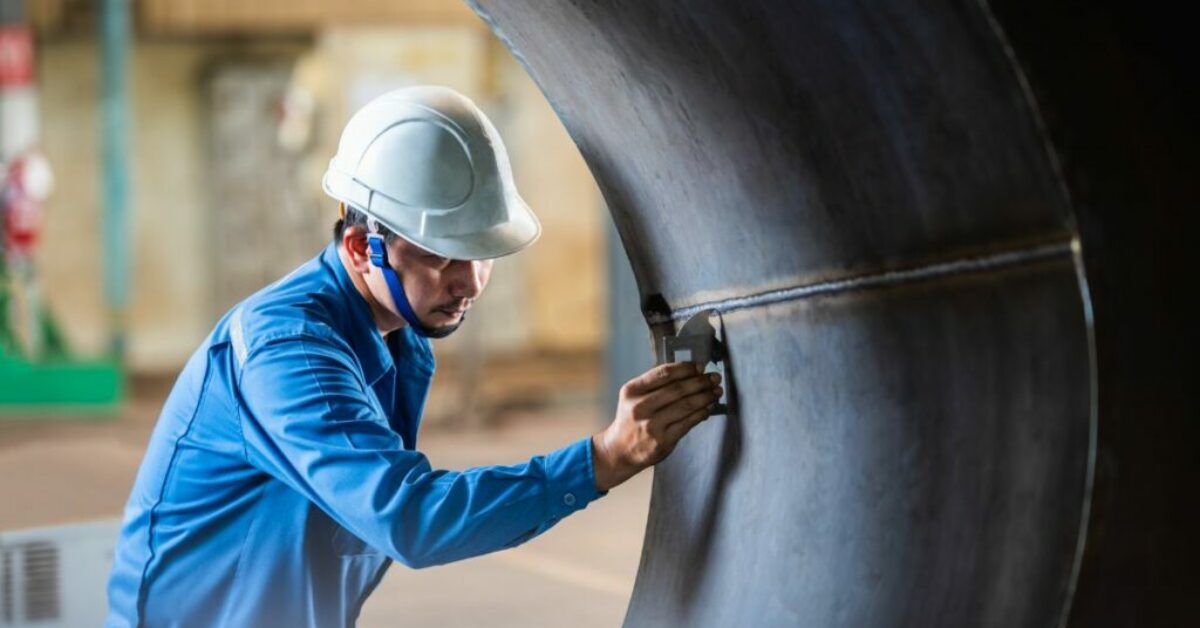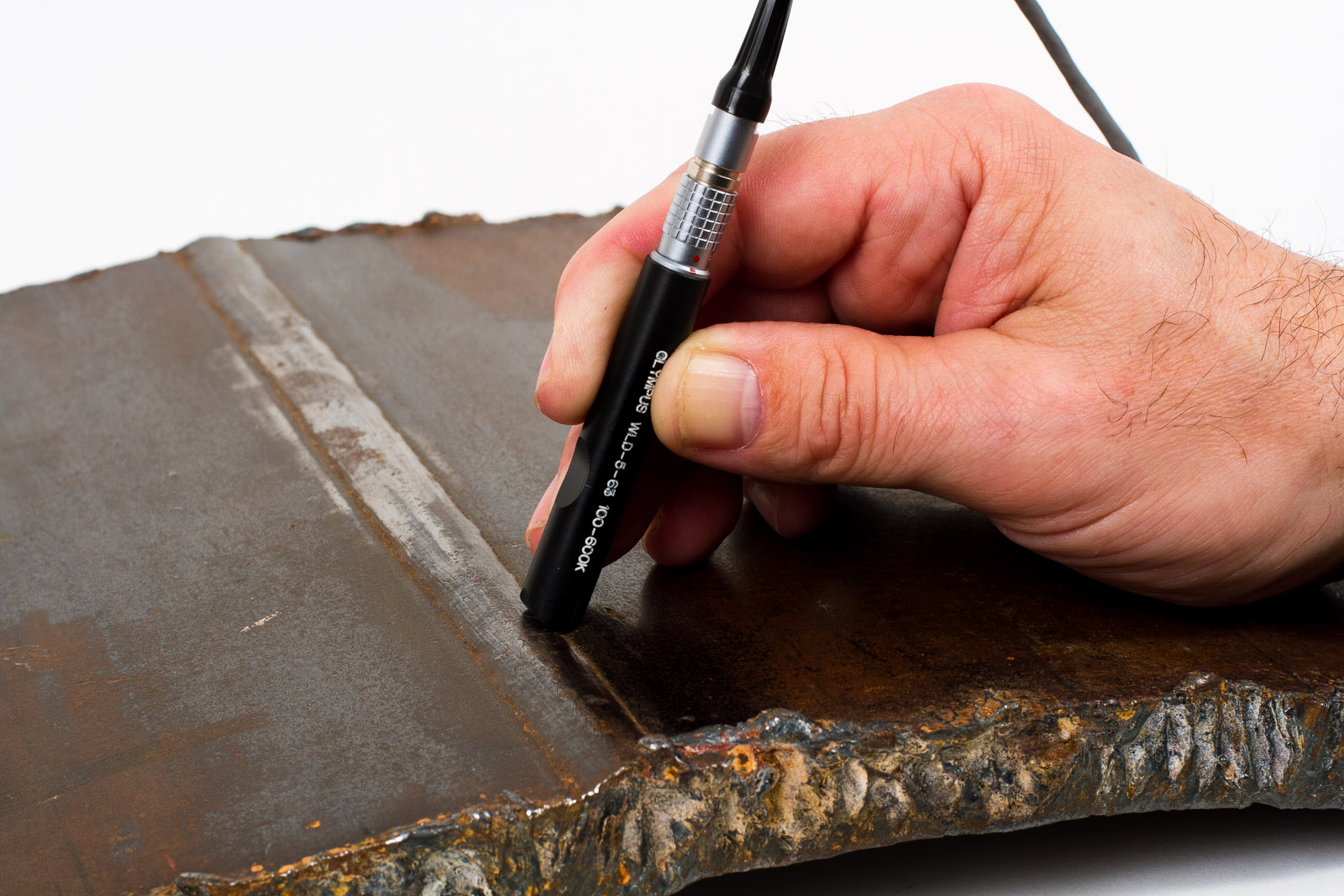Common Obstacles in Welding Inspection Madison and How to Overcome Them
Common Obstacles in Welding Inspection Madison and How to Overcome Them
Blog Article
Exactly How Reliable Welding Inspection Enhances Structural Integrity and Longevity
In the realm of building and construction and engineering, the importance of welding inspection can not be overemphasized, as it plays a critical duty in making sure structural honesty and extending the life-span of projects. Sign up with the exploration of just how effective welding examinations can transform possible vulnerabilities right into strengths, adding to the enduring success of buildings.
Significance of Welding Examination
Making certain the architectural honesty and security of welded constructions mandates rigorous welding assessment processes. Welding evaluation serves as an important safeguard in the construction and manufacturing industries, where the toughness and toughness of joints significantly impact the total performance of frameworks.
Along with security, welding evaluation plays an important function in quality control. By sticking to established requirements, evaluations ascertain the uniformity of welds, making certain that each satisfies the preferred strength and visual needs. This uniformity is vital not only for safety yet likewise for preserving the credibility and reliability of manufacturers and producers. Moreover, governing compliance is a significant vehicle driver of welding assessment practices. Market standards and codes, such as those from the American Welding Culture (AWS) or the International Organization for Standardization (ISO), require adherence to rigorous standards, highlighting the importance of inspections in fulfilling these lawful and professional responsibilities.
Secret Examination Techniques

Ultrasonic Evaluating (UT) uses high-frequency audio waves to discover subsurface imperfections, offering exact details about weld integrity without triggering any type of damage. Radiographic Examining (RT), involving X-rays or gamma rays, offers an in-depth photo of the weld's internal structure, exposing surprise blemishes. Magnetic Particle Checking (MPT) is an additional non-destructive approach, particularly efficient for detecting surface and near-surface stoppages in ferromagnetic materials.
Penetrant Screening (PT) entails the application of a liquid color to reveal surface-breaking flaws, offering a simple and cost-efficient option for non-porous products. Each technique has its details applications, staminas, and restrictions, and commonly a mix of approaches is utilized to achieve detailed inspection results. Proficiency of these strategies boosts the dependability and longevity of bonded frameworks, straightening with safety and security and efficiency expectations.
Identifying Common Problems

Porosity, characterized by gas pockets within the weld, decreases the weld's stamina and durability. Cracks, which can happen throughout or after welding, pose significant dangers due to their prospective to circulate under stress.
Incomplete combination, where the weld steel fails to bond totally with the base product, undermines the structural stability, leading to weak joints. This flaw commonly stems from not enough heat input useful source or inappropriate welding strategy. Slag additions occur when non-metallic products are caught in the weld, endangering its toughness and quality. These are often helpful hints a result of inadequate cleaning in between weld passes or inappropriate change use.
Recognizing these issues via careful evaluation methods, such as aesthetic exam, ultrasonic screening, or radiography, is important. Attending to these issues guarantees weld top quality, ultimately sustaining the architectural integrity and safety and security of the developed atmosphere.

Enhancing Architectural Performance
Understanding the relevance of identifying typical weld defects normally brings about checking out approaches for enhancing architectural efficiency. The foundational strategy for improving performance requires employing sophisticated welding strategies and materials that alleviate problem occurrence. Making use of premium filler materials and ensuring appropriate warmth control can substantially minimize concerns such as porosity and cracking, thus boosting the weld's honesty.
Incorporating advanced welding modern technologies, such as laser welding and friction mix welding, further magnifies structural strength. These strategies offer exceptional precision and minimized thermal distortion, straight influencing the resilience and stamina of the welded frameworks. Embracing automated welding systems can make sure regular and repeatable weld high quality, lessening human mistake.
In addition, applying strenuous pre-weld and post-weld treatments is vital. Correct joint layout, surface area preparation, and stress-relieving processes add to optimal weld performance. Conducting comprehensive pre-weld assessments enables for very early detection of potential concerns, facilitating timely corrections prior to they jeopardize the structure.
Long-term Advantages of Assessment

Through cautious examination methods, the long-term advantages to structural integrity come to be progressively apparent. Constant and extensive welding inspections play an important role in protecting against architectural failures by determining problems and variances early in the construction process. This positive strategy ensures that prospective issues description are resolved before they can jeopardize the safety and durability of structures. By catching issues early, expensive repairs and downtime are lessened, ultimately prolonging the life expectancy of the framework.
Additionally, normal inspections contribute to maintaining compliance with market requirements and laws, thereby avoiding legal and financial consequences. This adherence to quality control not only improves the dependability of the structure but also fosters trust among stakeholders, consisting of customers, designers, and regulative bodies. The detailed paperwork of evaluation outcomes functions as a valuable resource for future repair and maintenance initiatives, promoting educated decision-making.
Additionally, efficient evaluation practices sustain advancement by integrating advanced modern technologies such as non-destructive screening and digital imaging, which can improve precision and effectiveness. This technological assimilation additionally highlights the commitment to quality in architectural stability. Ultimately, buying careful welding inspections is a prudent approach that generates significant lasting benefits, safeguarding both the physical and economic financial investment in facilities projects.
Verdict
Effective welding examination plays a critical function in enhancing structural honesty and durability by recognizing problems early in the building and construction process. Making use of methods such as aesthetic evaluation, ultrasonic screening, and radiographic testing makes certain the detection of concerns like fractures and porosity that compromise weld toughness. Extensive inspections ensure conformity with market standards, thereby extending the lifespan of structures, reducing expensive repairs, and promoting stakeholder rely on the integrity and safety of bonded building and constructions.
In the realm of building and design, the relevance of welding inspection can not be overstated, as it plays an essential duty in ensuring structural stability and expanding the life-span of projects.Making sure the structural stability and safety and security of bonded constructions mandates extensive welding inspection processes.Structure upon the relevance of welding examination in guarding architectural integrity, understanding the essential assessment methods comes to be critical for effective implementation. Efficient welding assessment includes a variety of techniques made to evaluate weld top quality, ensuring compliance with rigid design requirements - Welding Inspection Madison.Efficient welding evaluation plays a crucial function in enhancing structural integrity and longevity by identifying issues early in the building and construction procedure
Report this page